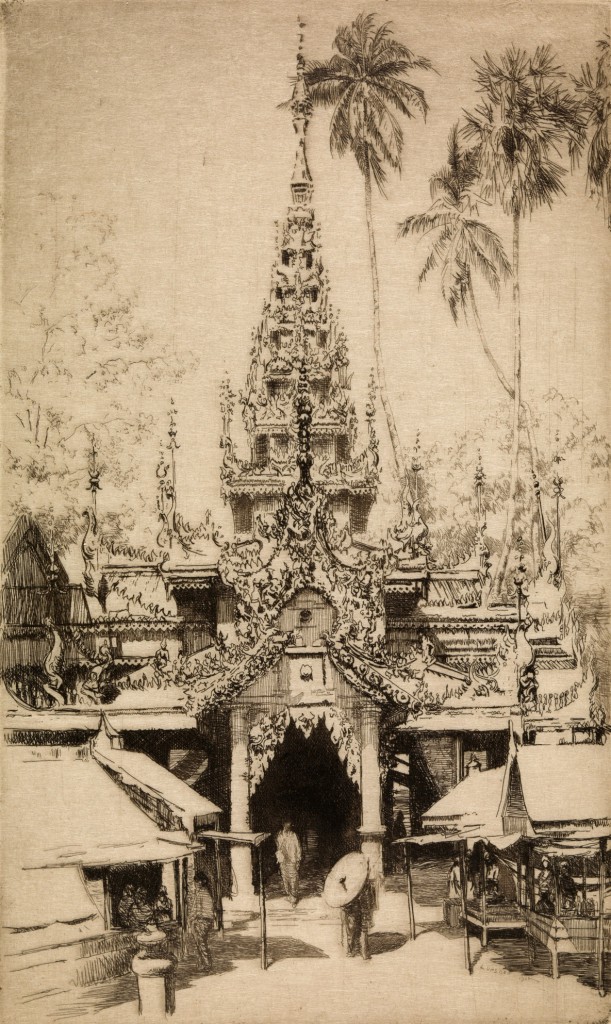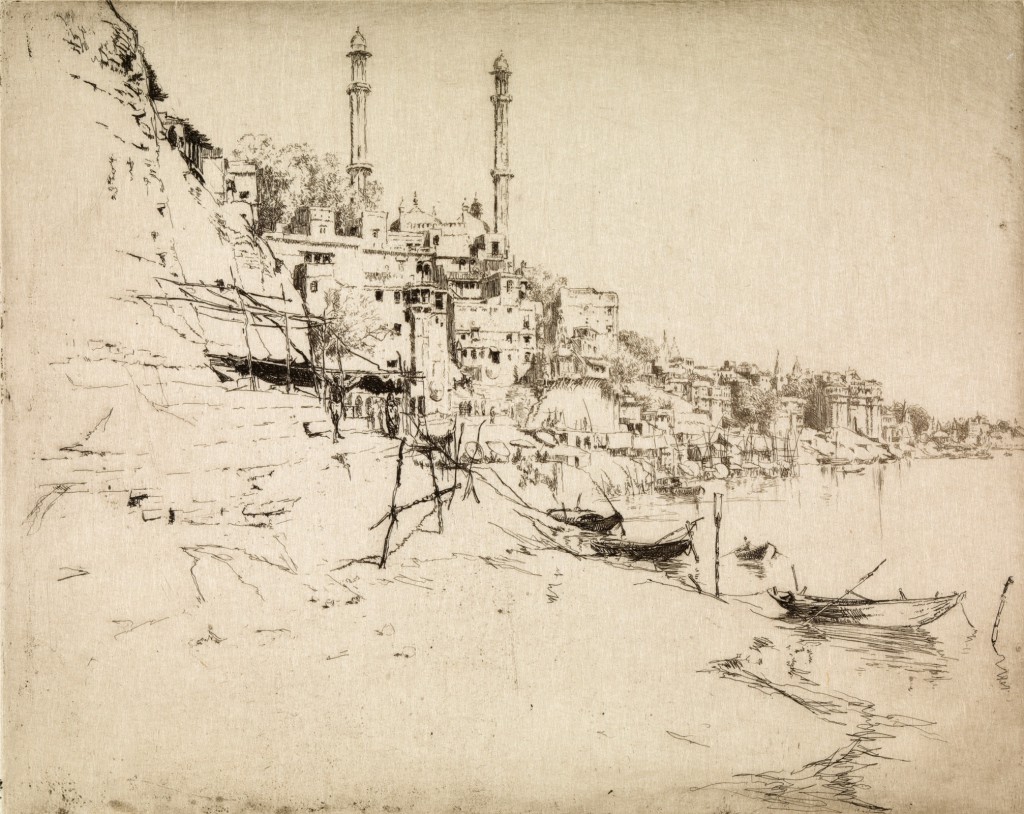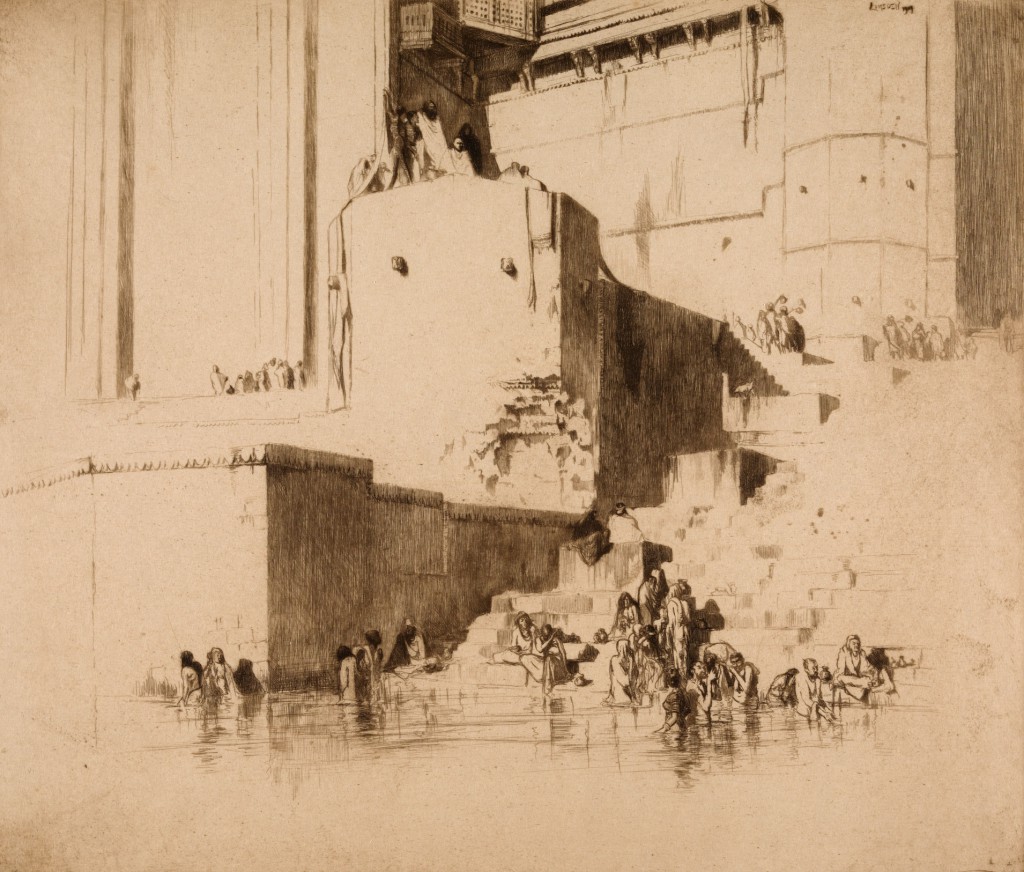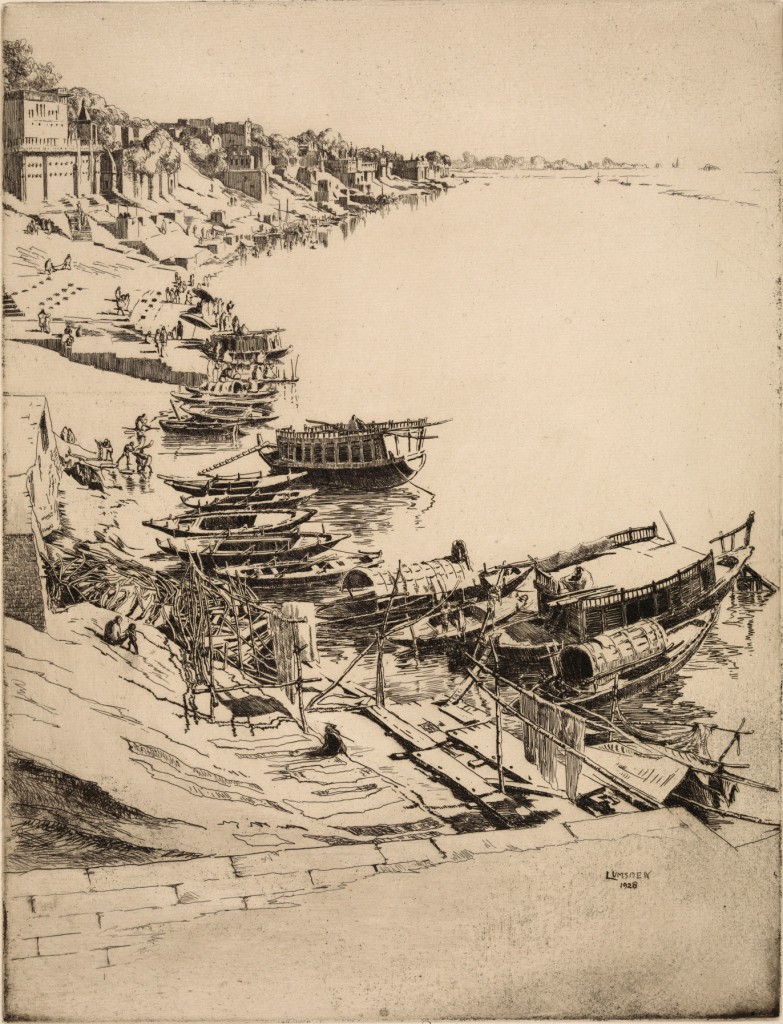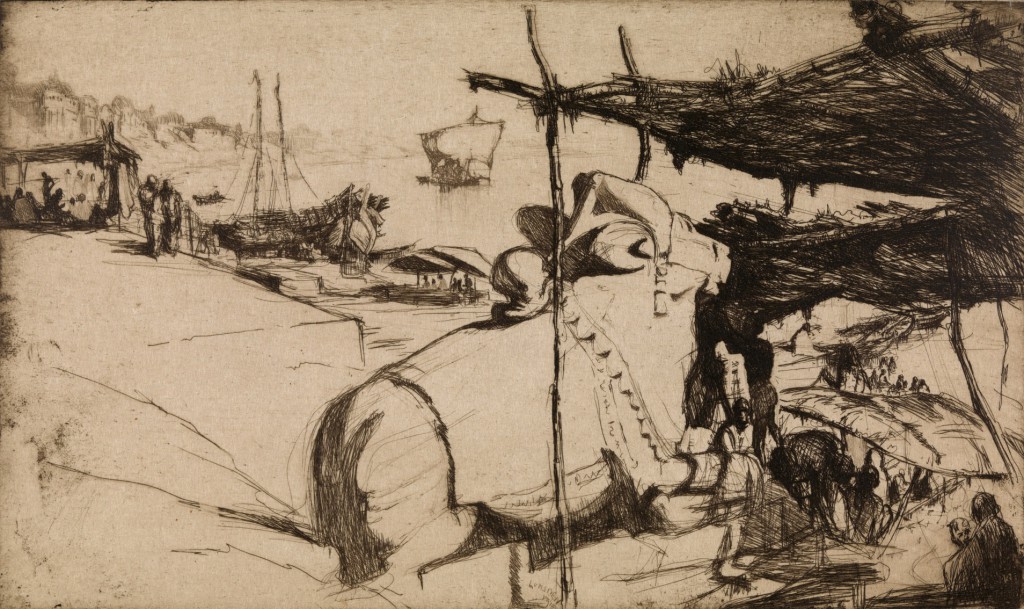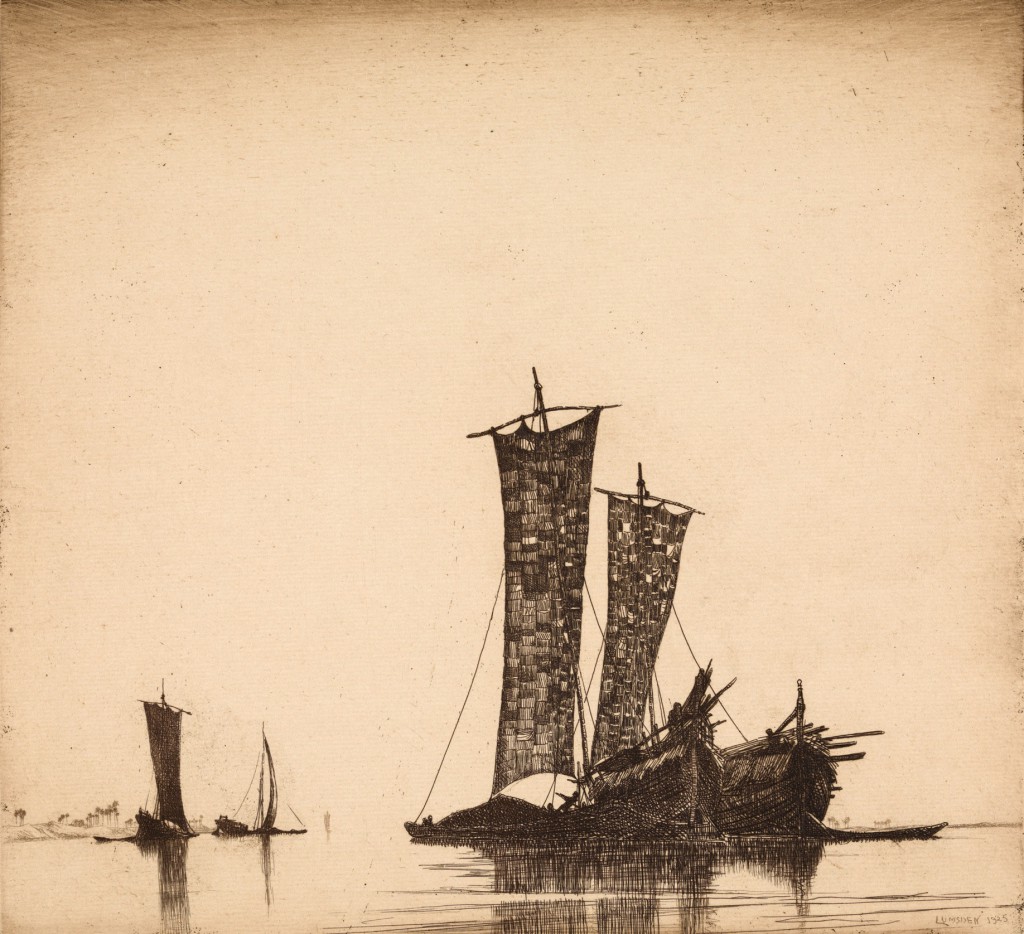While visiting the Burmese capital of Rangoon in 1912, English artist Ernest Stephen Lumsden chanced upon a tourist guide containing a small photograph of the Ganges River at Benares. Inspired, the master etcher rushed to the holy city, commencing a decades-long fascination with India. Approximately 125 plates—more than a third of Lumsden’s lifetime output—are of Indian imagery, collected during four trips to the British colony over the next 25 years.
His landscapes, city views, and descriptions of everyday life continue the European tradition of picturing far-flung domains; however Lumsden seems to resist much of his predecessors’ impulse to romanticize and exoticize. While undeniably enchanted by the country, he nonetheless offers a relatively sober vision of India, one that suggests an easy, contented interaction with its places and peoples. Praised by his contemporaries, Lumsden’s technical virtuosity includes an economy of line, carefully built compositions, and, above all, a command over depicting India’s intense light.
Light and Line’s 19 prints, presented in VMFA’s South Asian galleries, are recent gifts to the museum from the Frank Raysor Collection. The exhibition is curated by Dr. John Henry Rice, E. Rhodes and Leona B. Carpenter Curator of South Asian Art, with Curatorial Intern Samina Iqbal.


